Reliability Improvement of LoRa with ARQ and Relay Node
Abstract
1. Introduction
2. Related Work
2.1. Overview of LoRa and LoRaWan Network
2.2. Limits of LoRa in Smart Farm and City
3. Proposed Scheme
3.1. Proposed ARQ Deployment in LoRa
3.1.1. Selective-Repeat ARQ Protocol
3.1.2. Message Format for ARQ
3.2. Proposed Relay Node Operation in LoRa
4. Performance Evaluation and Analysis
4.1. Open Hardware Testbed
4.2. Experiment Environment
4.3. LoRa PDR Evaluation Result and Analysis
4.4. ARQ and Relay Evaluation Result and Analysis
5. Conclusions
Author Contributions
Conflicts of Interest
References
- Khurpade, J.M.; Rao, D.; Sanghavi, P.D. A Survey on IOT and 5G Network. In Proceedings of the 2018 International Conference on Smart City and Emerging Technology (ICSCET), Mumbai, India, 5 January 2018; pp. 1–3. [Google Scholar]
- Vishwakarma, S.K.; Upadhyaya, P.; Kumari, B.; Mishra, A.K. Smart Energy Efficient Home Automation System Using IoT. In Proceedings of the 2019 4th International Conference on Internet of Things: Smart Innovation and Usages (IoT-SIU), Ghaziabad, India, 18–19 April 2019; pp. 1–4. [Google Scholar]
- Bingöl, E.; Kuzlu, M.; Pipattanasompom, M. A LoRa-based Smart Streetlighting System for Smart Cities. In Proceedings of the 2019 7th International Istanbul Smart Grids and Cities Congress and Fair (ICSG), Istanbul, Turkey, 25–26 April 2019; pp. 66–70. [Google Scholar]
- Raza, U.; Kulkarni, P.; Sooriyabandara, M. Low power wide area networks: An overview. IEEE Commun. Surv. Tutor. 2017, 19, 855–873. [Google Scholar] [CrossRef]
- Sandoval, R.M.; Garcia-Sanchez, A.-J.; Garcia-Haro, J.; Chen, T.M. Optimal policy derivation for transmission duty-cycle constrained LPWAN. IEEE Internet Things J. 2018, 5, 3114–3125. [Google Scholar] [CrossRef]
- Zourmand, A.; Hing, A.L.K.; Hung, C.W.; AbdulRehman, M. Internet of Things (IoT) using LoRa technology. In Proceedings of the 2019 IEEE International Conference on Automatic Control and Intelligent Systems (I2CACIS), Selangor, Malaysia, 29 June 2019; pp. 324–330. [Google Scholar]
- Adame, T.; Bel, A.; Bellalta, B. Increasing LPWAN Scalability by Means of Concurrent Multiband IoT Technologies: An Industry 4.0 Use Case. IEEE Access 2019, 7, 46990–47010. [Google Scholar] [CrossRef]
- Barriquello, C.H.; Bernardon, D.P.; Canha, L.N.; eSilva, F.E.S.; Porto, D.S.; da Silveira Ramos, M.J. Performance assessment of a low power wide area network in rural smart grids. In Proceedings of the 2017 52nd International Universities Power Engineering Conference (UPEC), Crete, Greece, 28–31 August 2017; pp. 1–4. [Google Scholar]
- Qadir, Q.M.; Rashid, T.A.; Al-Salihi, N.K.; Ismael, B.; Kist, A.A.; Zhang, Z. Low power wide area networks: A survey of enabling technologies, applications and interoperability needs. IEEE Access 2018, 6, 77454–77473. [Google Scholar] [CrossRef]
- Augustin, A.; Yi, J.; Clausen, T.; Townsley, W. A study of LoRa: Long range & low power networks for the internet of things. Sensors 2016, 16, 1466. [Google Scholar]
- Croce, D.; Gucciardo, M.; Mangione, S.; Santaromita, G.; Tinnirello, I. Impact of LoRa imperfect orthogonality: Analysis of link-level performance. IEEE Commun. Lett. 2018, 22, 796–799. [Google Scholar] [CrossRef]
- “LA Annual Report External”. Tech. Rep. Available online: https://www.lora-alliance.org (accessed on 15 July 2019).
- Patel, D.; Won, M. Experimental study on low power wide area networks (LPWAN) for mobile Internet of Things. In Proceedings of the 2017 IEEE 85th Vehicular Technology Conference (VTC Spring), Sydney, Australia, 4–7 June 2017; pp. 1–5. [Google Scholar]
- “LoRaWAN™ Specification,”. Tech. Rep. Available online: https://www.lora-alliance.org (accessed on 10 December 2019).
- Sørensen, R.B.; Kim, D.M.; Nielsen, J.J.; Popovski, P. Analysis of latency and MAC-layer performance for class A LoRaWAN. IEEE Wirel. Commun. Lett. 2017, 6, 566–569. [Google Scholar] [CrossRef]
- Săcăleanu, D.I.; Manciu, I.P.; Perişoară, L.A. Performance Analysis of LoRa Technology in Wireless Sensor Networks. In Proceedings of the 2019 10th IFIP International Conference on New Technologies, Mobility and Security (NTMS), Canary Islands, Spain, 24–26 June 2019; pp. 1–5. [Google Scholar]
- Salam, A.E.U.; Arifin, A.; Rizal, M. Forest Fire Detection using LoRa Wireless Mesh Topology. In Proceedings of the 2018 2nd East Indonesia Conference on Computer and Information Technology (EIConCIT), Makassar, Indonesia, 6–7 November 2018; pp. 184–187. [Google Scholar]
- Villarim, M.R.; de Luna, J.V.H.; de Farias Medeiros, D.; Pereira, R.I.S.; de Souza, C.P. LoRa Performance Assessment in Dense Urban and Forest Areas for Environmental Monitoring. In Proceedings of the 2019 4th International Symposium on Instrumentation Systems, Circuits and Transducers (INSCIT), São Paulo, Brazil, 26–30 August 2019; pp. 1–5. [Google Scholar]
- “2018 Smart Farm Leading Casebook”. Tech. Rep. Available online: https://www.smartfarmkorea.net (accessed on 10 December 2019).
- Prajanti, A.D.; Wahyuaji, B.; Rukmana, F.B.; Harwahyu, R.; Sari, R.F. Performance Analysis of LoRa WAnTechnology for Optimum Deployment of Jakarta Smart City. In Proceedings of the 2018 2nd International Conference on Informatics and Computational Sciences (ICICoS), Jawa Tengah, Indonesia, 30–31 October 2018; pp. 1–6. [Google Scholar]
- Razali, S.M.; Mamat, K.; Abdul-Basit, K.; Ali, F.H.M. Performance enhancement of wireless sensor network (WSN) with the implementation of Hybrid ARQ (HARQ) and Transmission Power Control (TPC). In Proceedings of the 2014 IEEE Conference on Wireless Sensors (ICWiSE), Selangor, Malaysia, 26–28 October 2014; pp. 36–40. [Google Scholar]

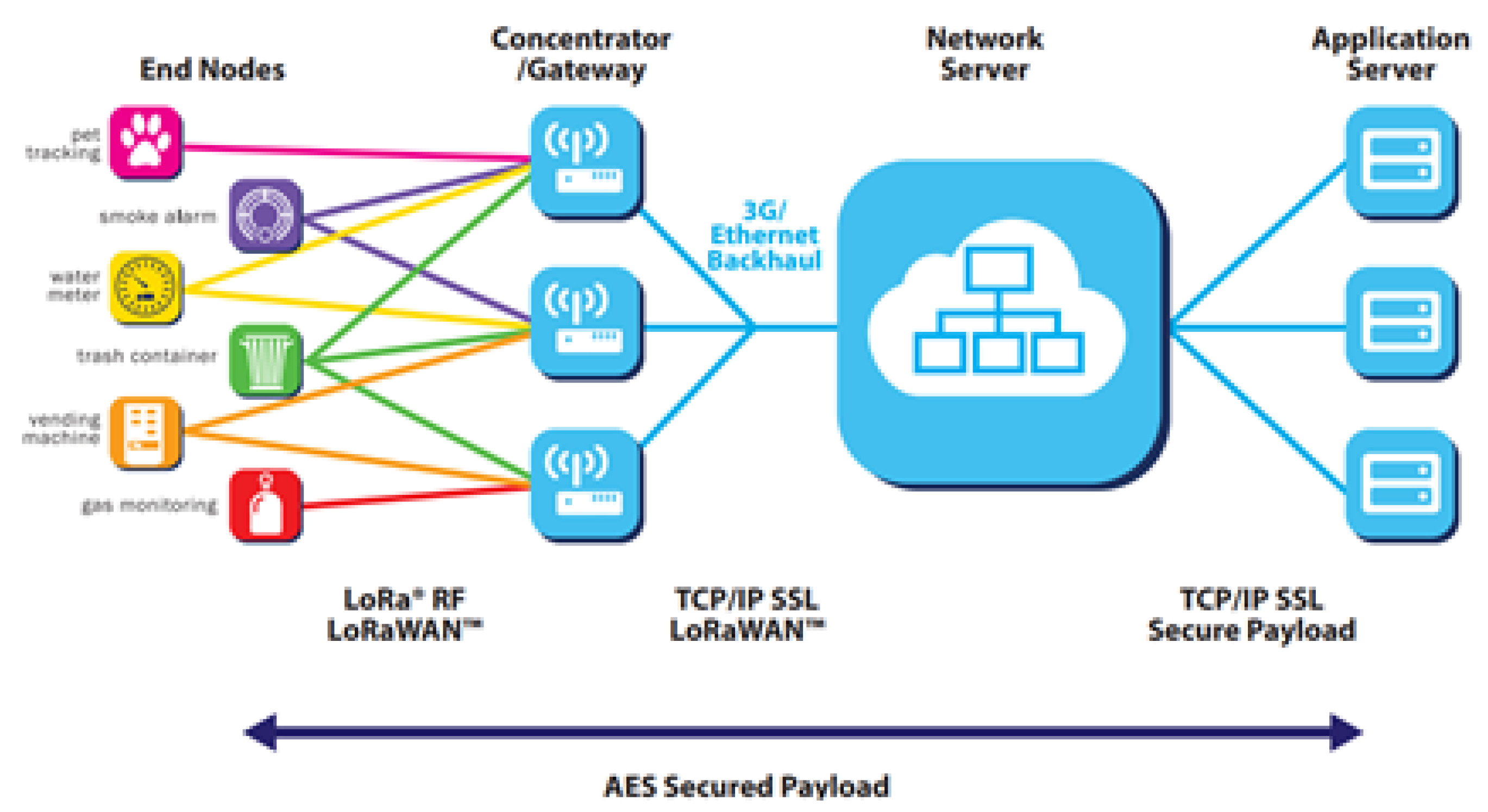
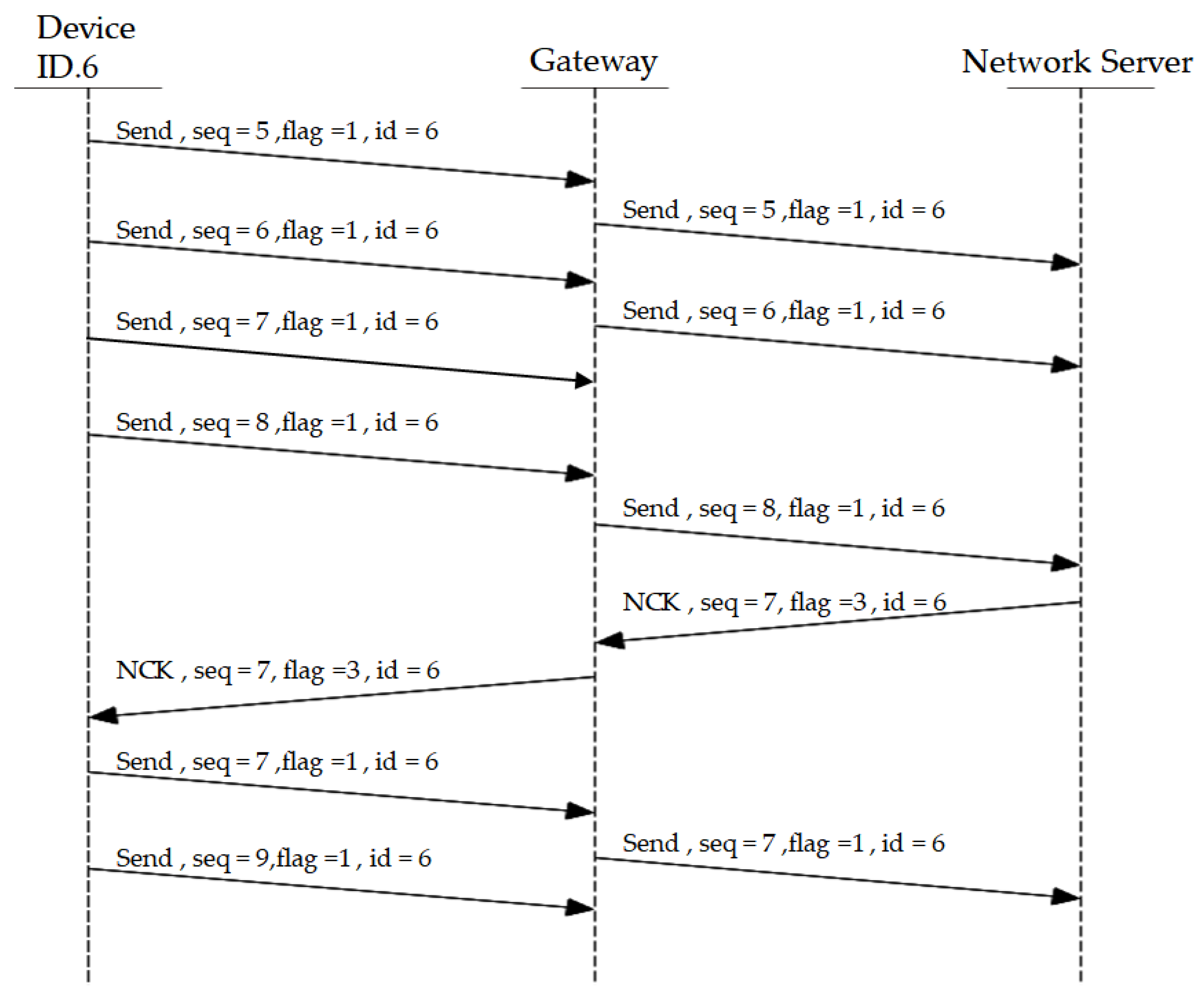
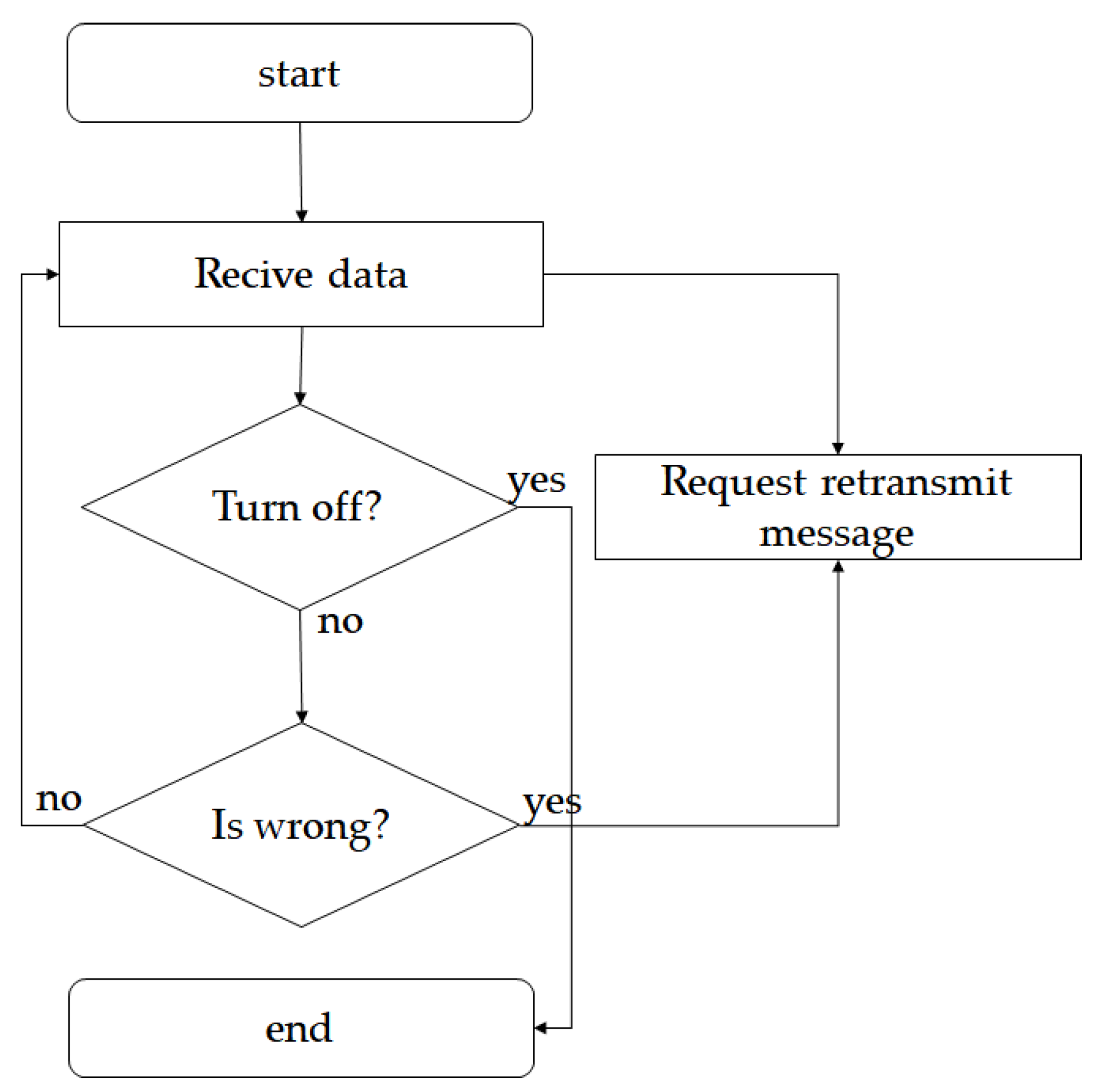
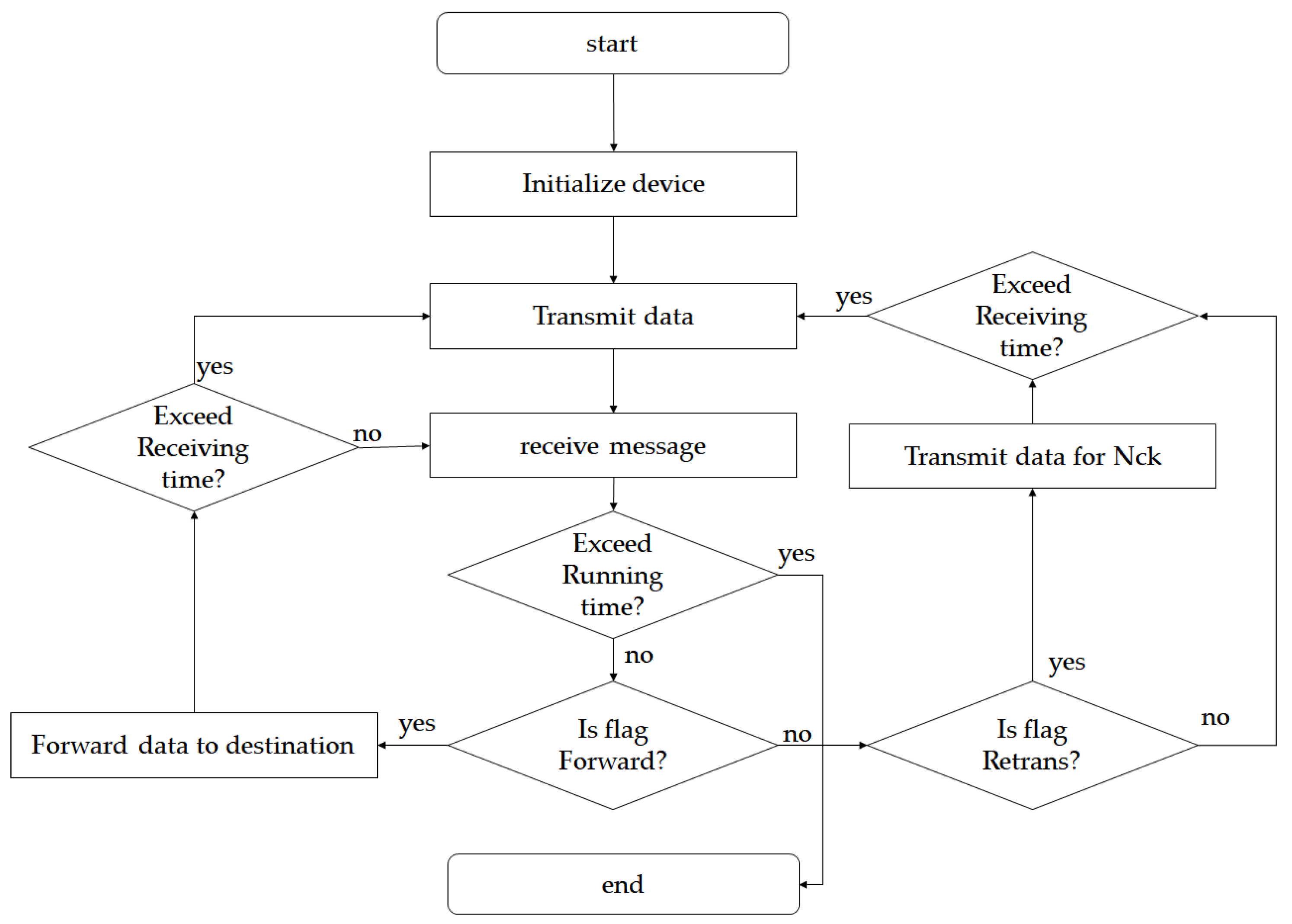



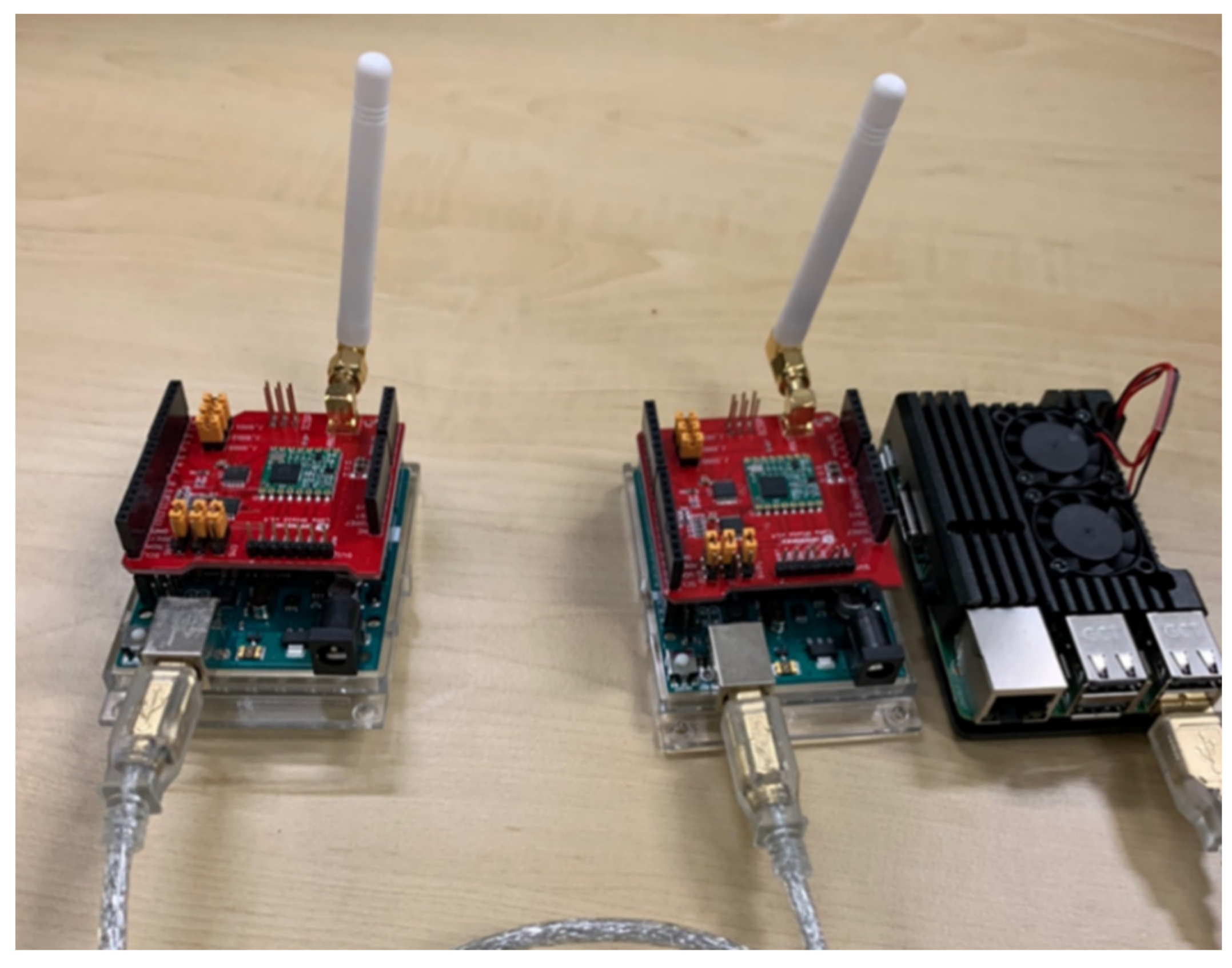
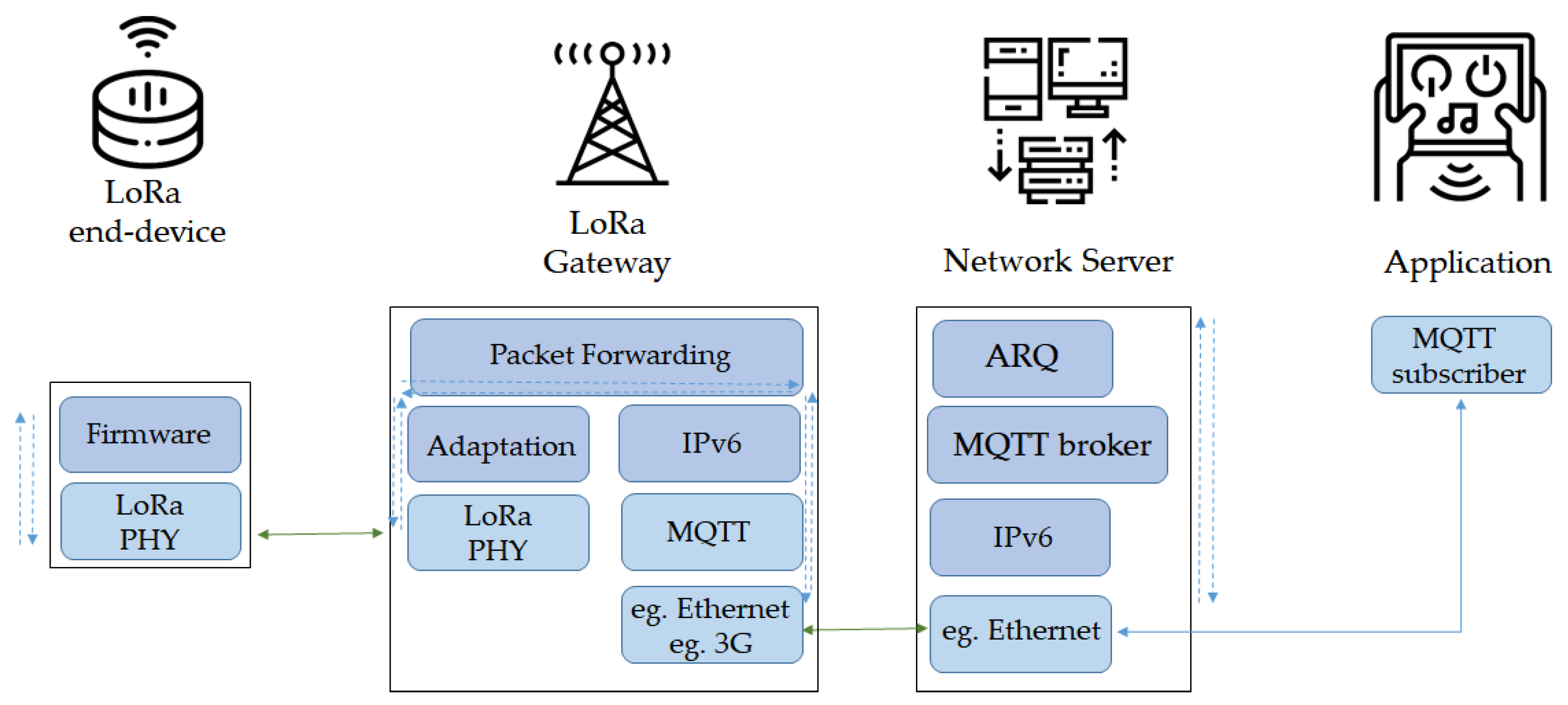

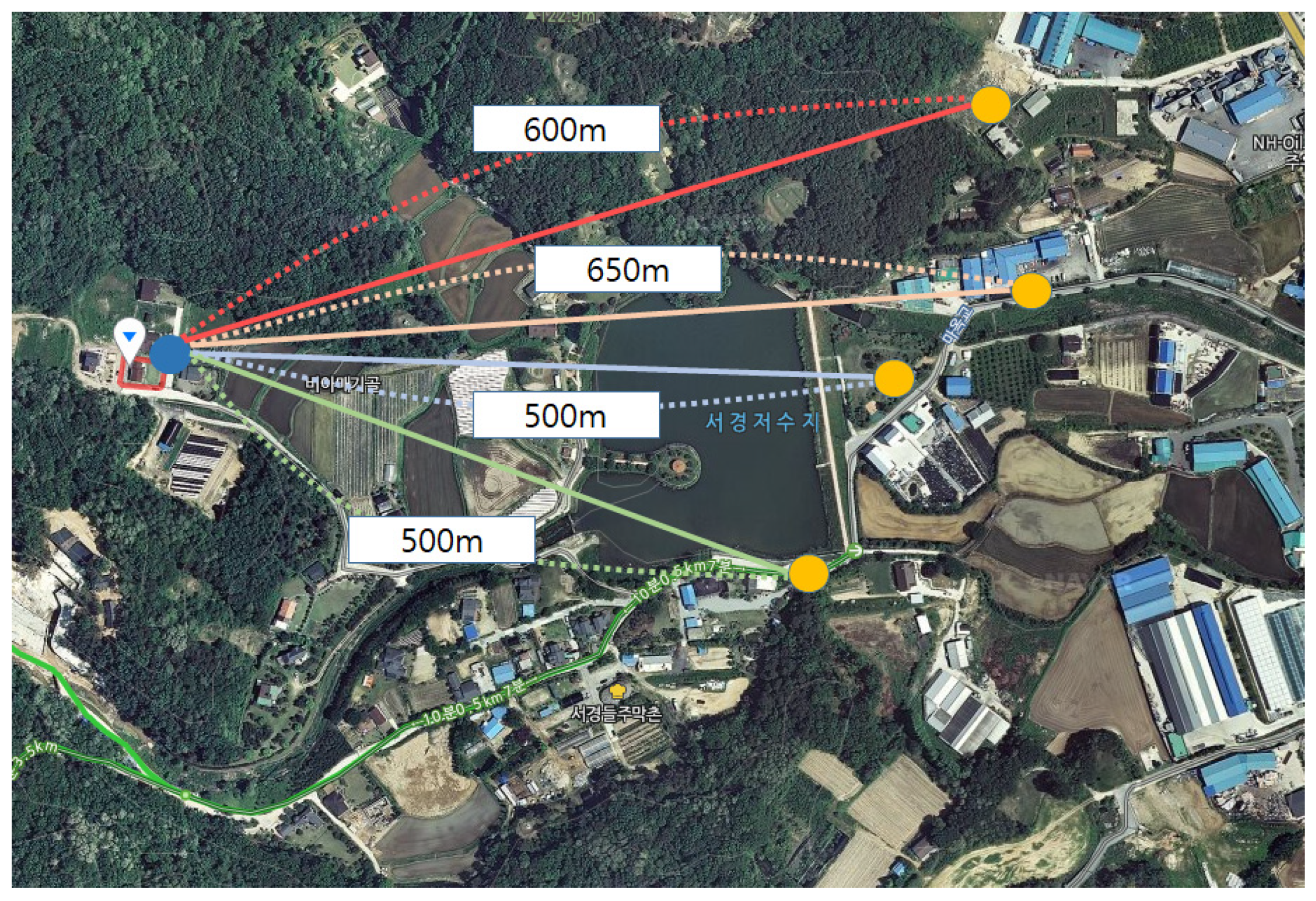
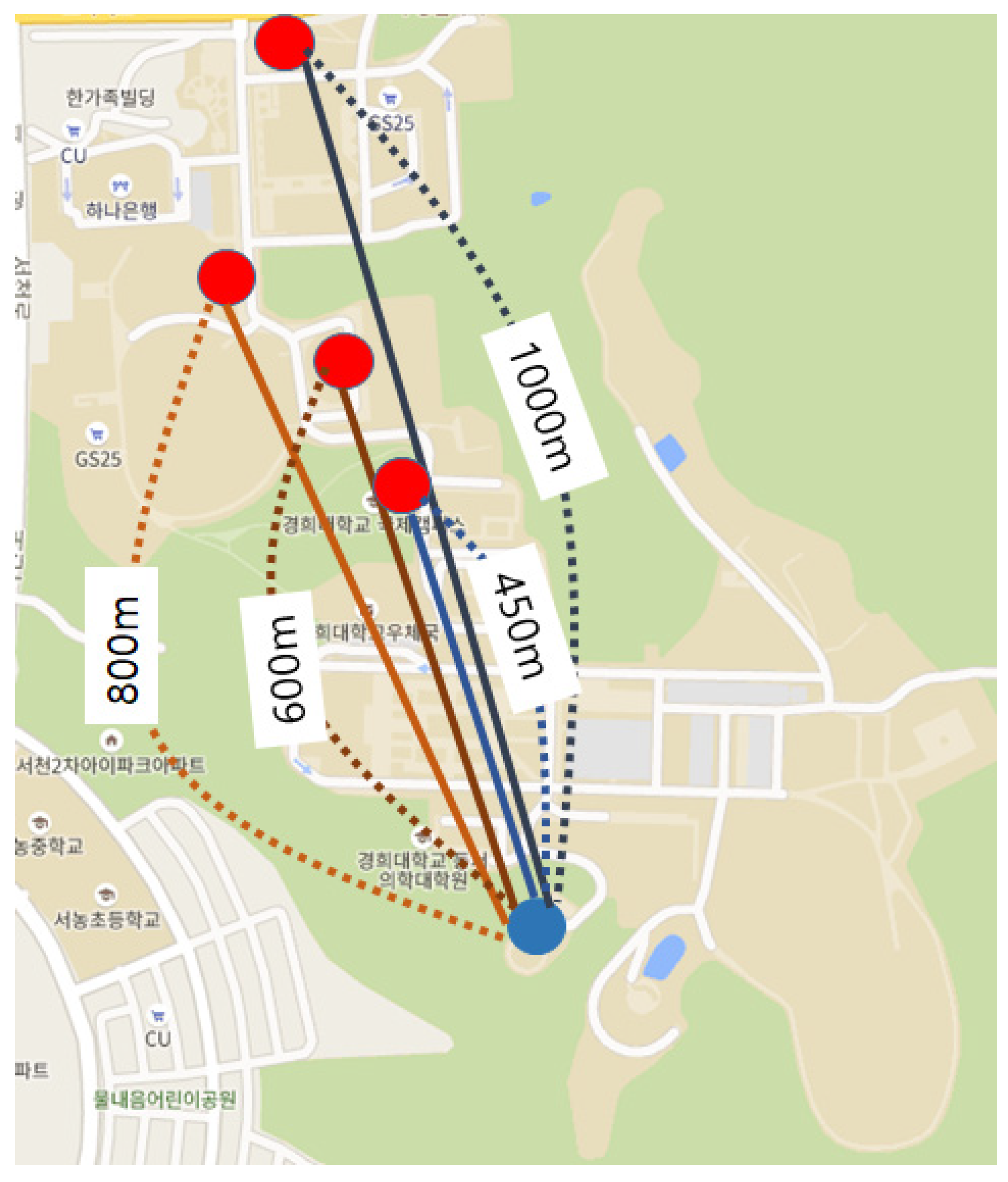
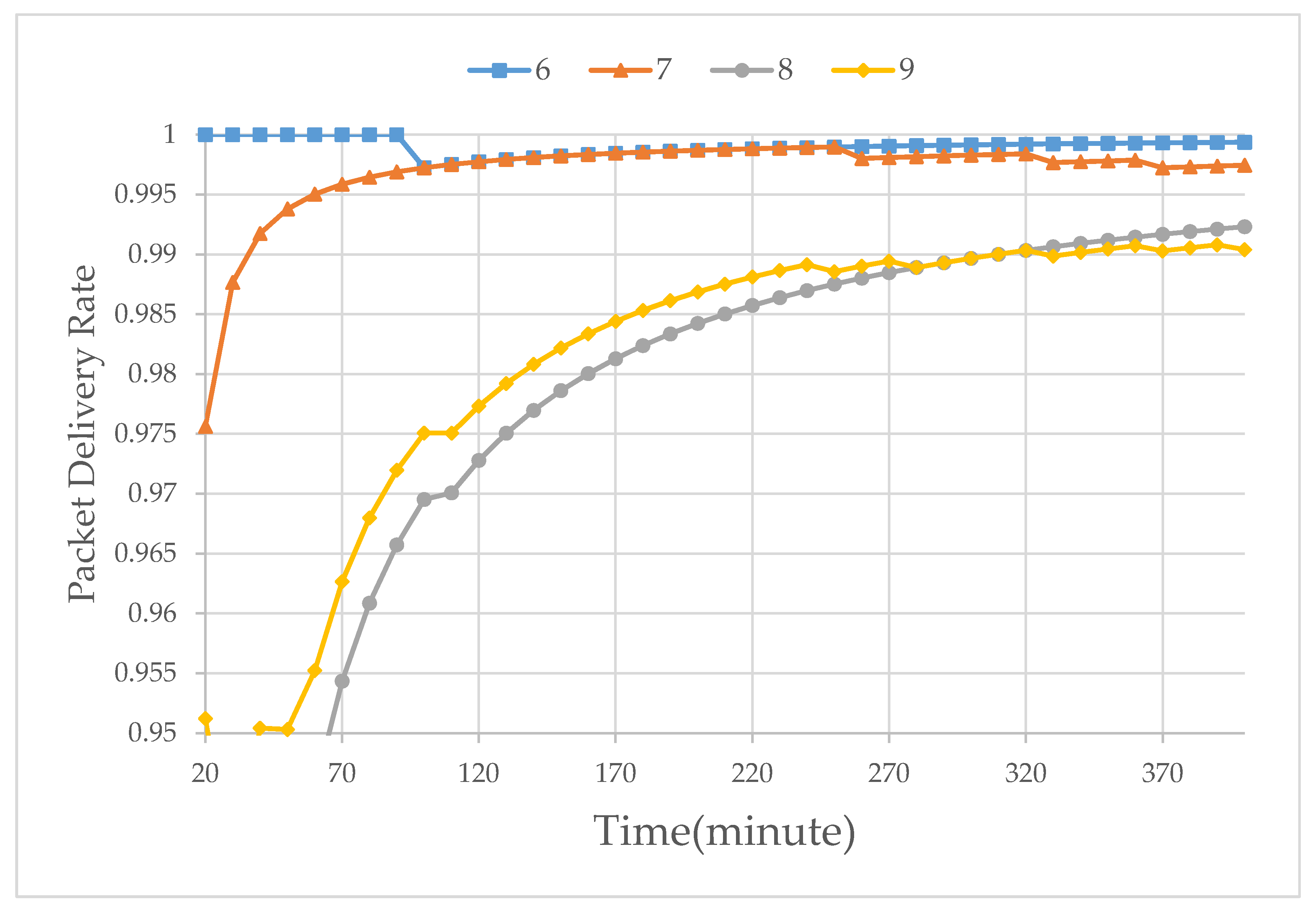
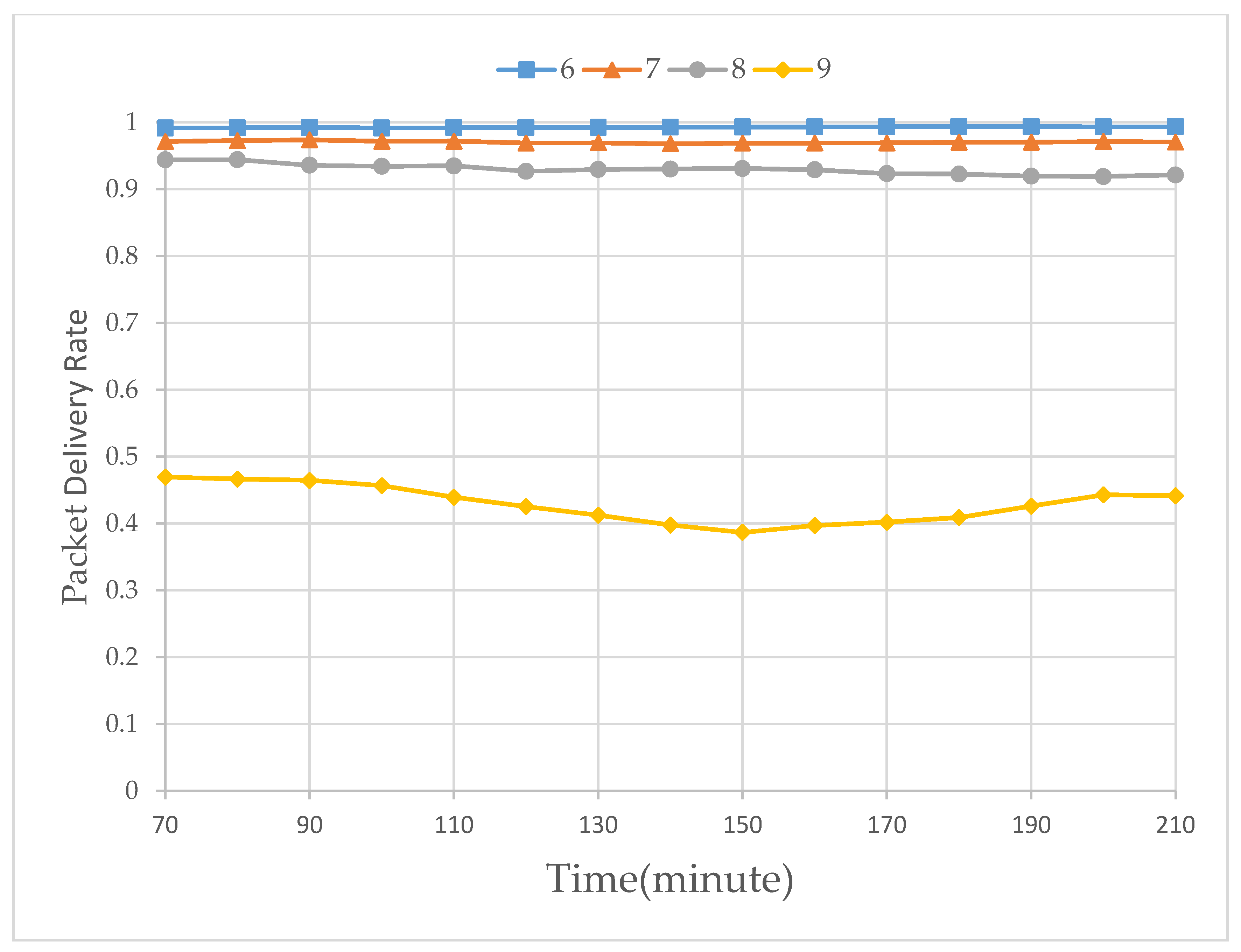
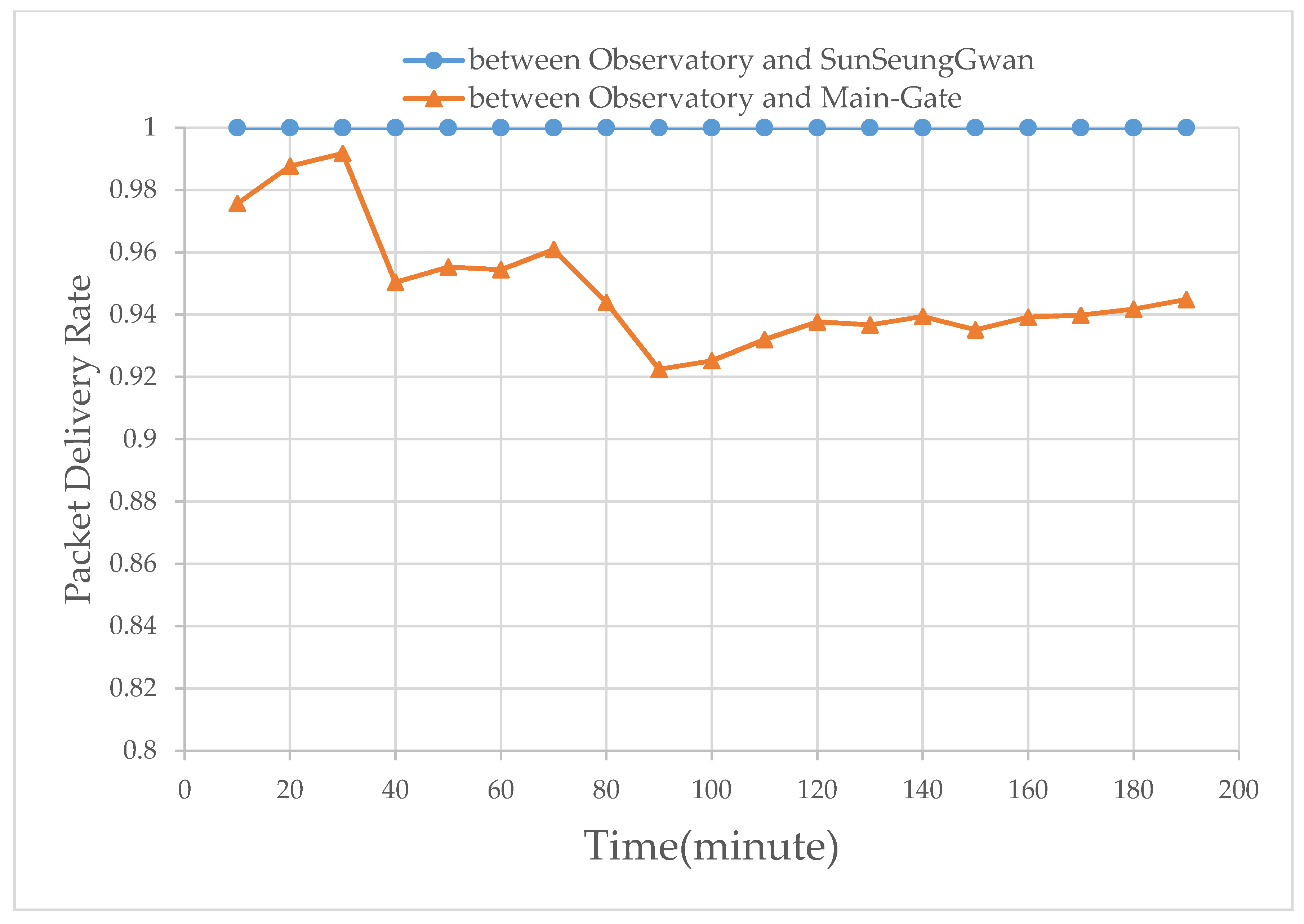
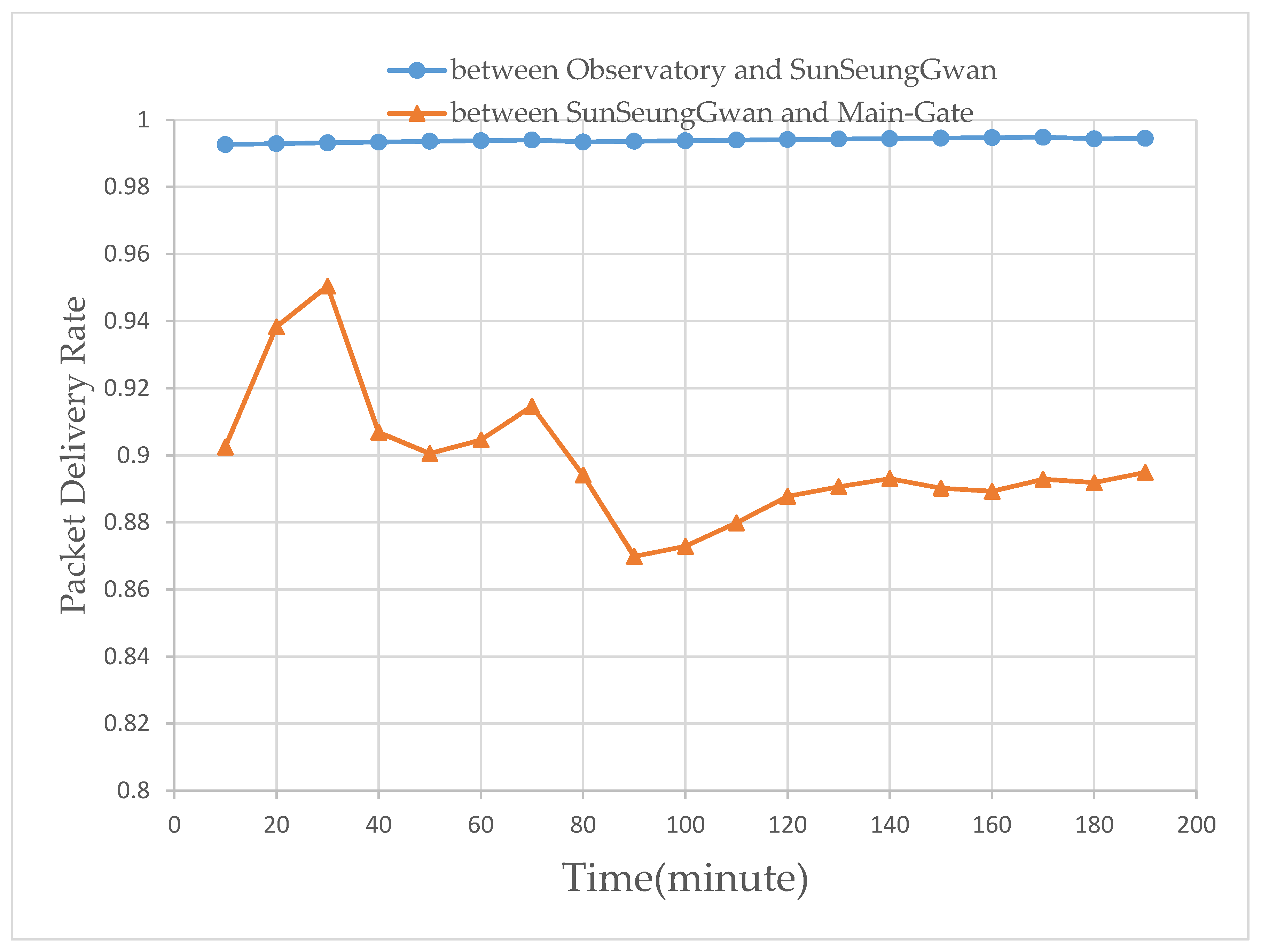
| Europe | North America | China | Korea | |
|---|---|---|---|---|
| Frequency Band | 867~869 MHz | 902~928 MHz | 470~510 MHz | 920~925 MHz |
| Spreading factor | Bitrate | Range | Time on Air(ms) | |
| SF7 | 5470 bps | 2 km | 56 ms | |
| SF8 | 3125 bps | 4 km | 100 ms | |
| SF9 | 1760 bps | 6 km | 200 ms | |
| SF10 | 980 bps | 8 km | 370 ms | |
| SF11 | 440 bbs | 11 km | 740 ms | |
| SF12 | 290 bps | 14 km | 1400 ms | |
| Component | Description |
|---|---|
| LoRa Device | Arduino Uno |
| MCU: ATmega328P | |
| Operating Voltage: 5 V | |
| Flash Memory: 32 KB | |
| Dragino LoRa Shield | |
| LoRa Gateway | Arduino Uno |
| MCU: ATmega328P | |
| Operating Voltage: 5 V | |
| Flash Memory: 32 KB | |
| Dragino LoRa Shield | |
| Raspberry Pi 3 |
| Type | Value |
|---|---|
| Rf Power | 23 dbm |
| The Number of Nodes | 4 |
| The Number of Gateways | 1 |
| Transmission Interval | 1000~1500 ms |
| Spreading Factor | SF12 |
| Coding Rate | 4/5 |
| Bandwidth | 125 khz |
| Bit Rate | 292 bps |
© 2020 by the authors. Licensee MDPI, Basel, Switzerland. This article is an open access article distributed under the terms and conditions of the Creative Commons Attribution (CC BY) license (http://creativecommons.org/licenses/by/4.0/).
Share and Cite
Choi, R.; Lee, S.; Lee, S. Reliability Improvement of LoRa with ARQ and Relay Node. Symmetry 2020, 12, 552. https://doi.org/10.3390/sym12040552
Choi R, Lee S, Lee S. Reliability Improvement of LoRa with ARQ and Relay Node. Symmetry. 2020; 12(4):552. https://doi.org/10.3390/sym12040552
Chicago/Turabian StyleChoi, Rocksan, SeungGwan Lee, and Sungwon Lee. 2020. "Reliability Improvement of LoRa with ARQ and Relay Node" Symmetry 12, no. 4: 552. https://doi.org/10.3390/sym12040552
APA StyleChoi, R., Lee, S., & Lee, S. (2020). Reliability Improvement of LoRa with ARQ and Relay Node. Symmetry, 12(4), 552. https://doi.org/10.3390/sym12040552





